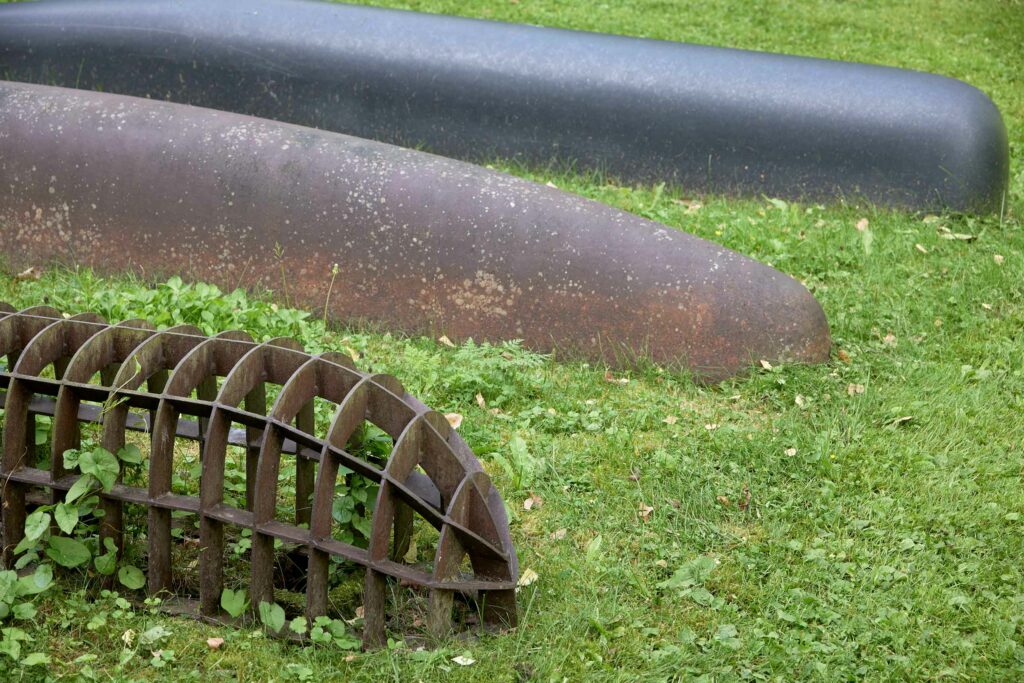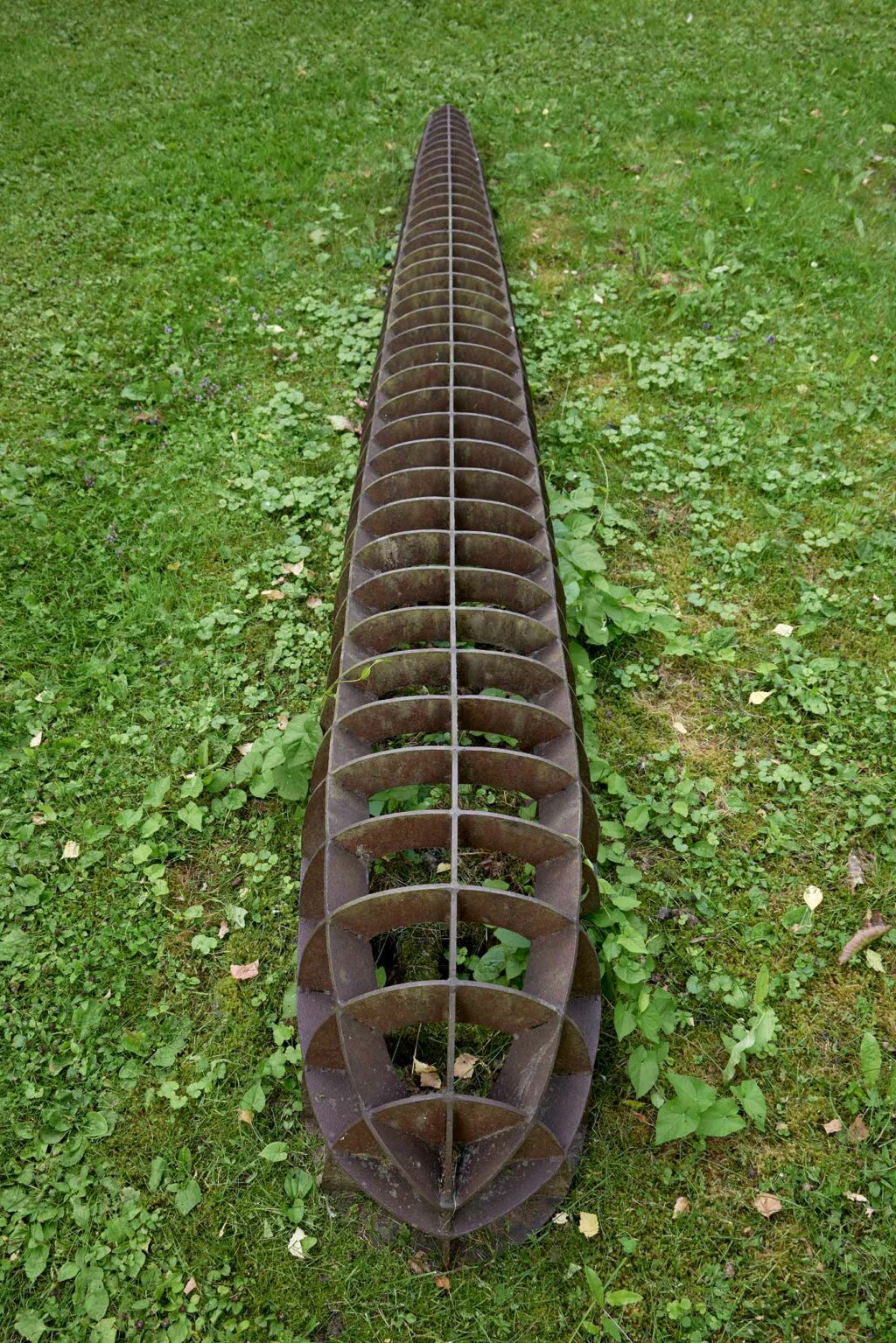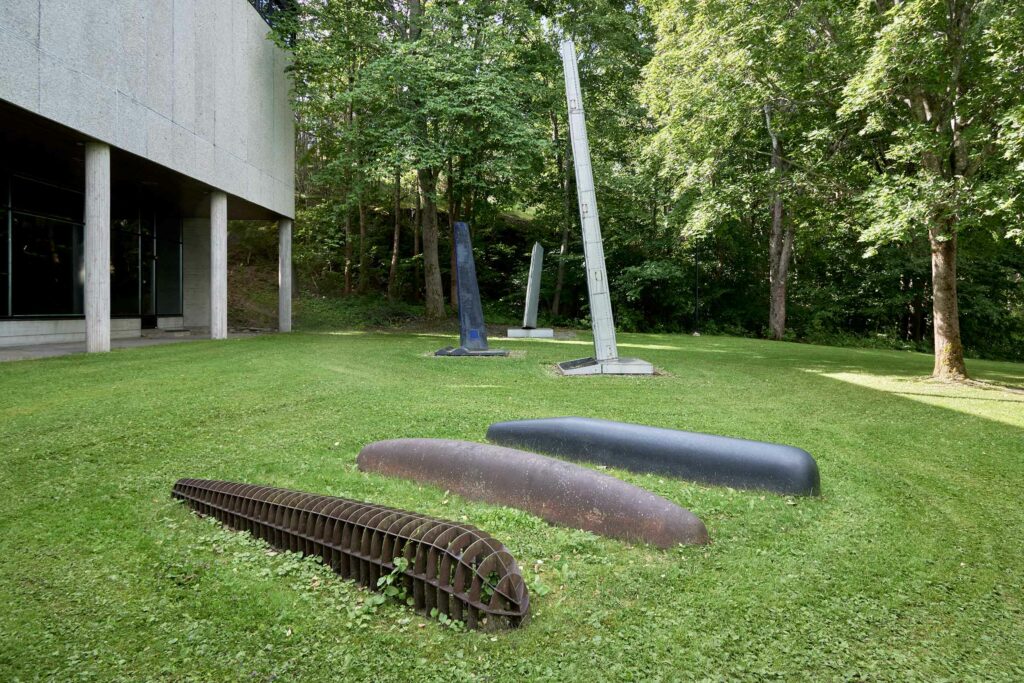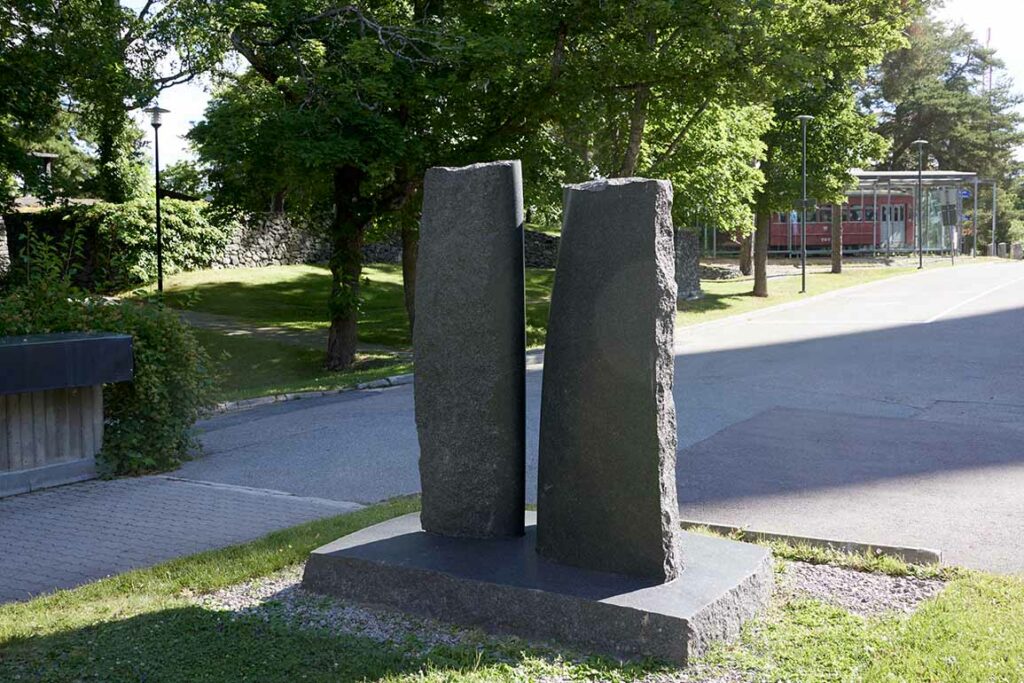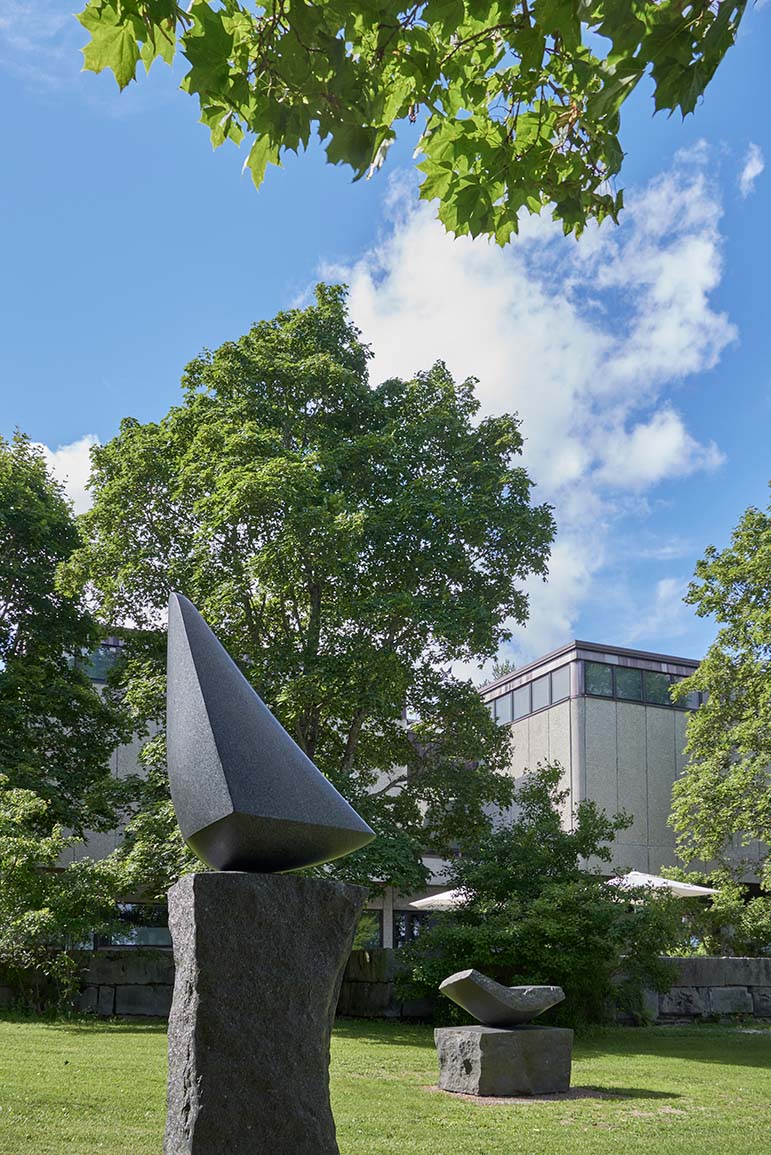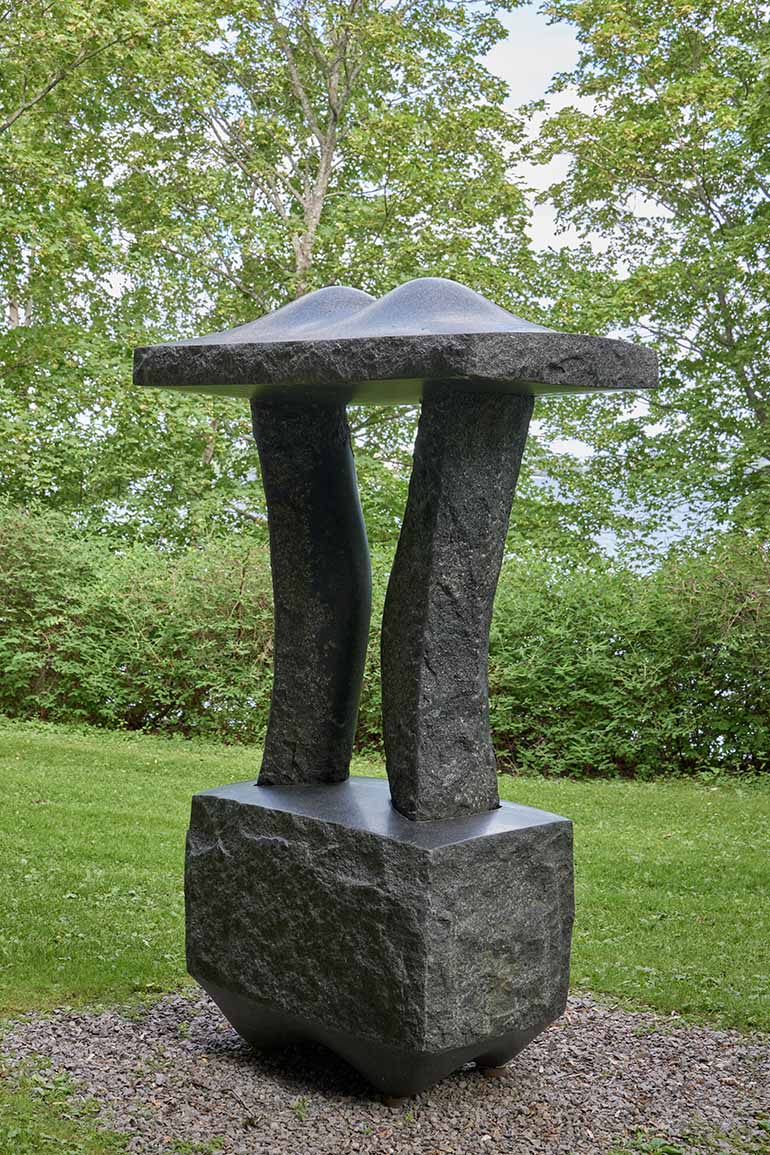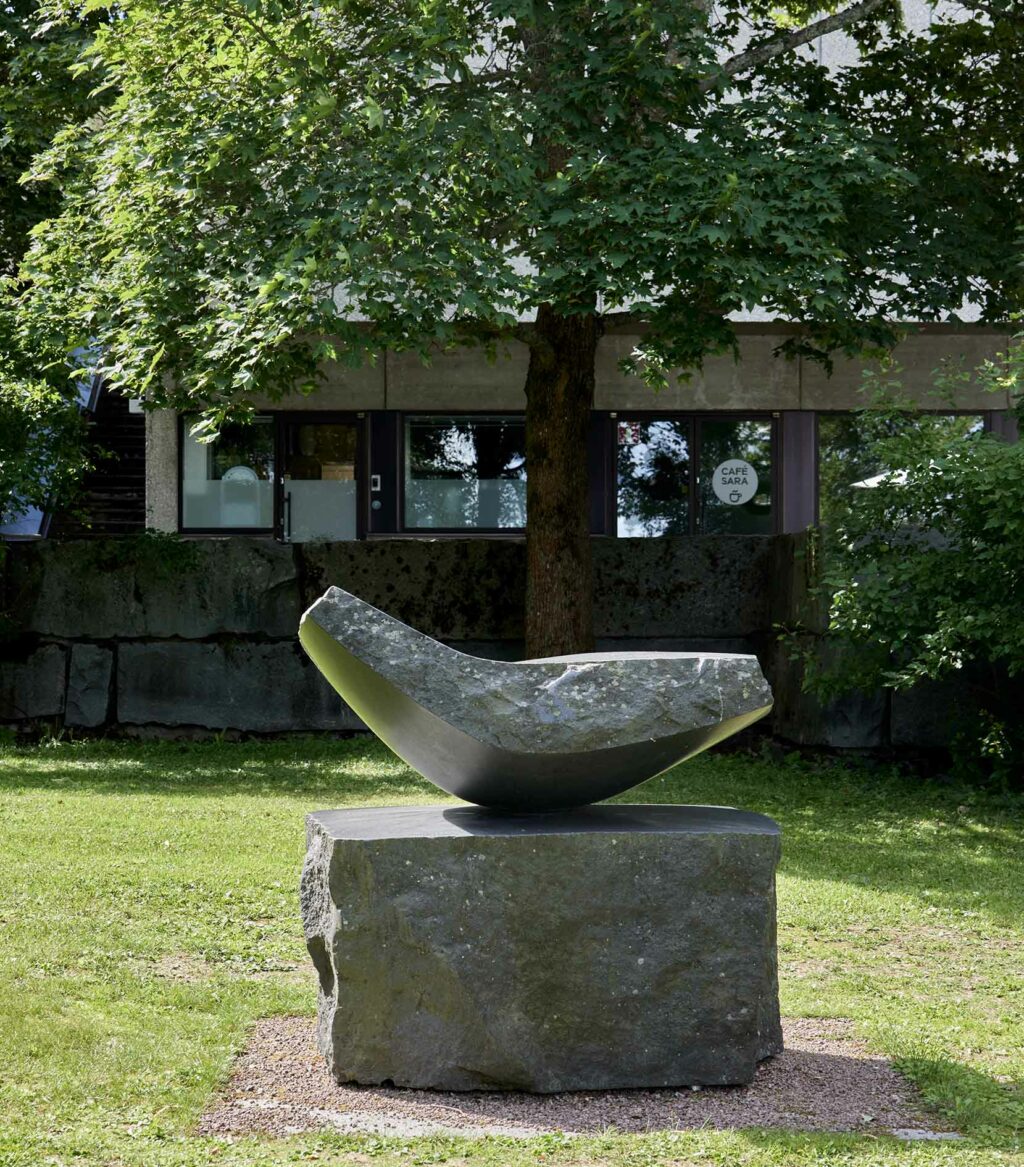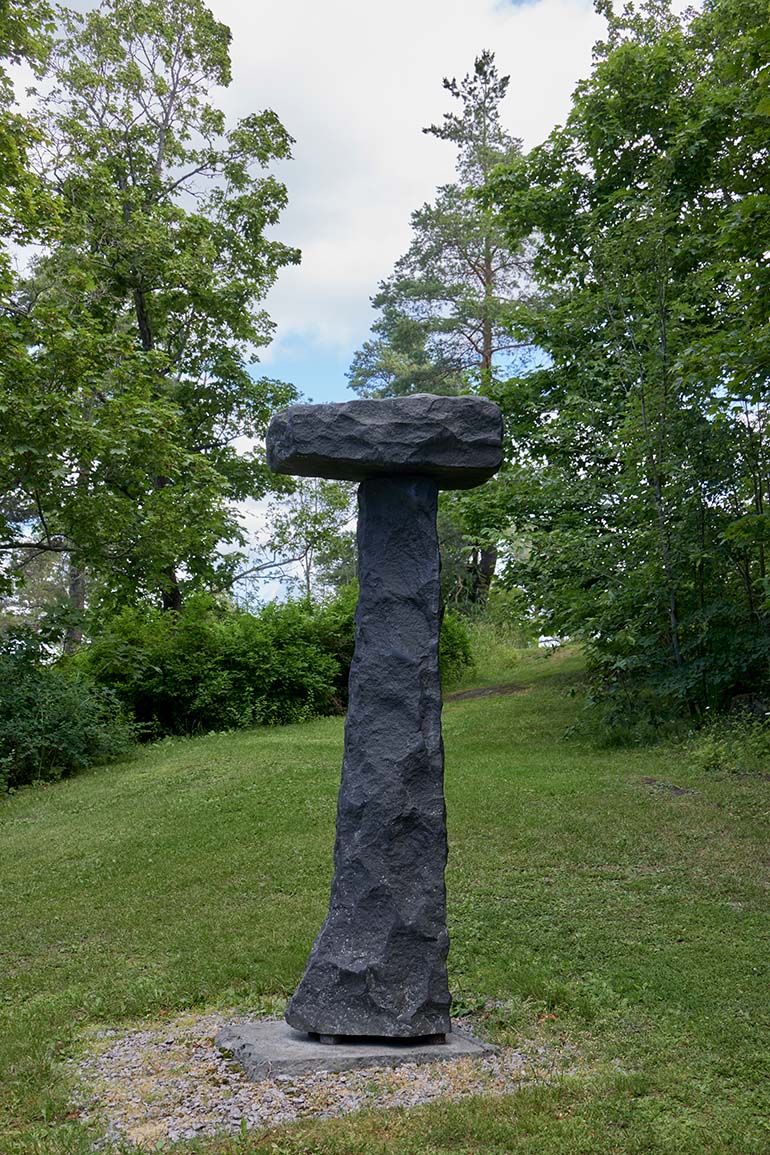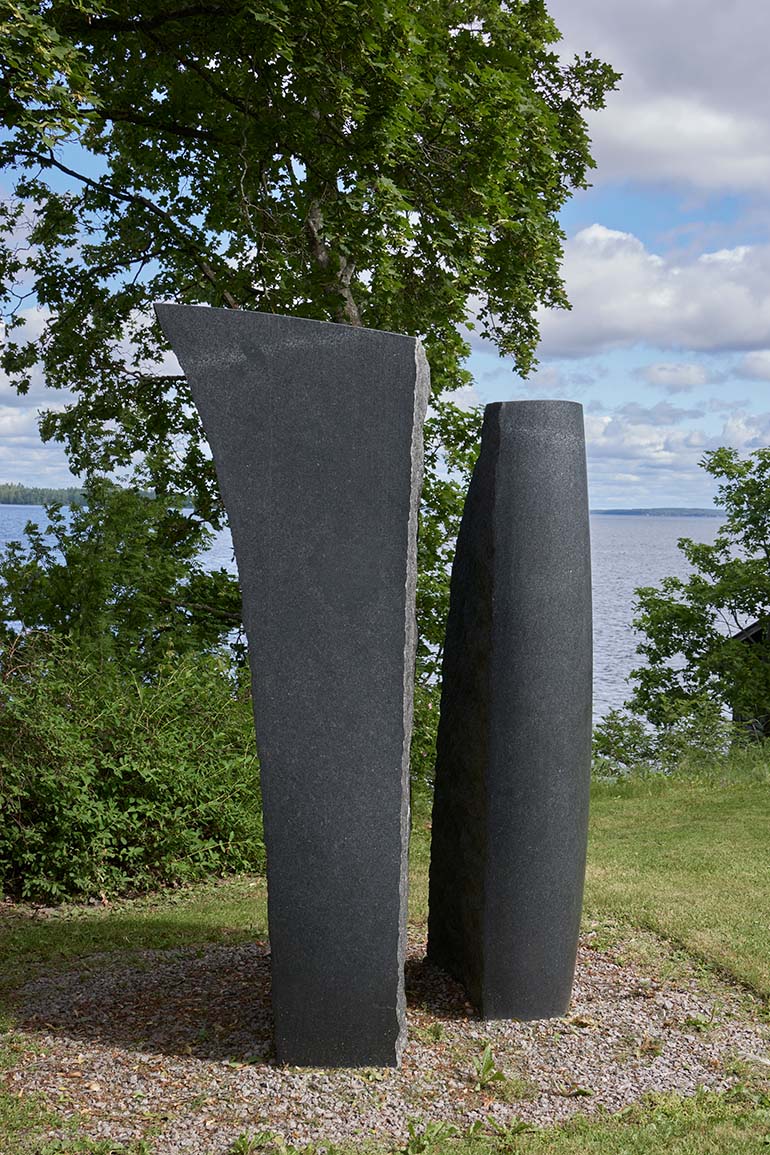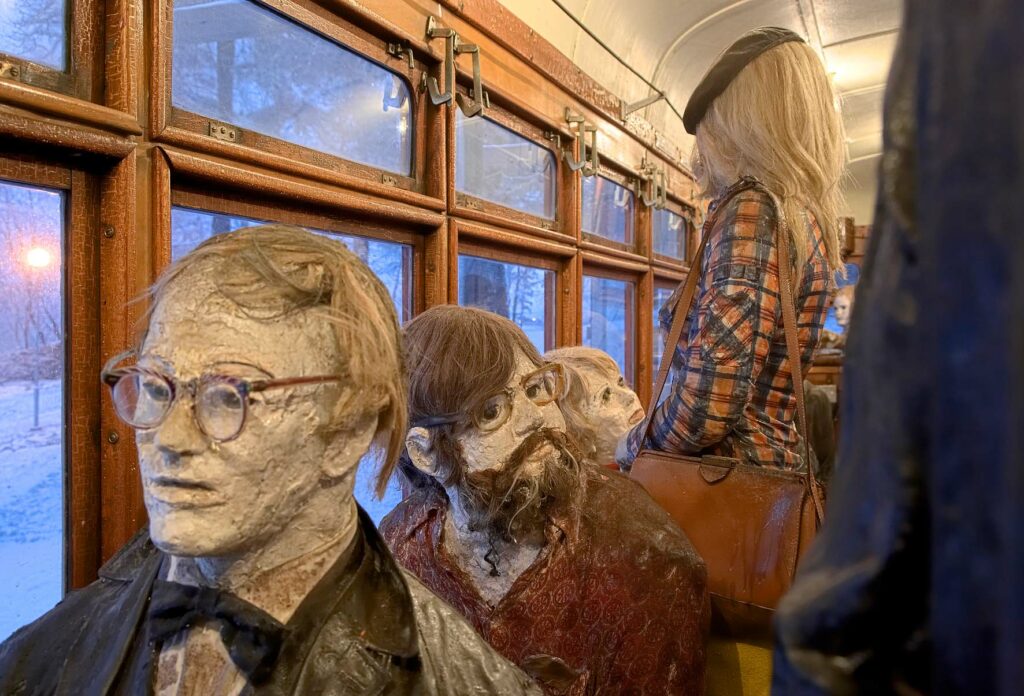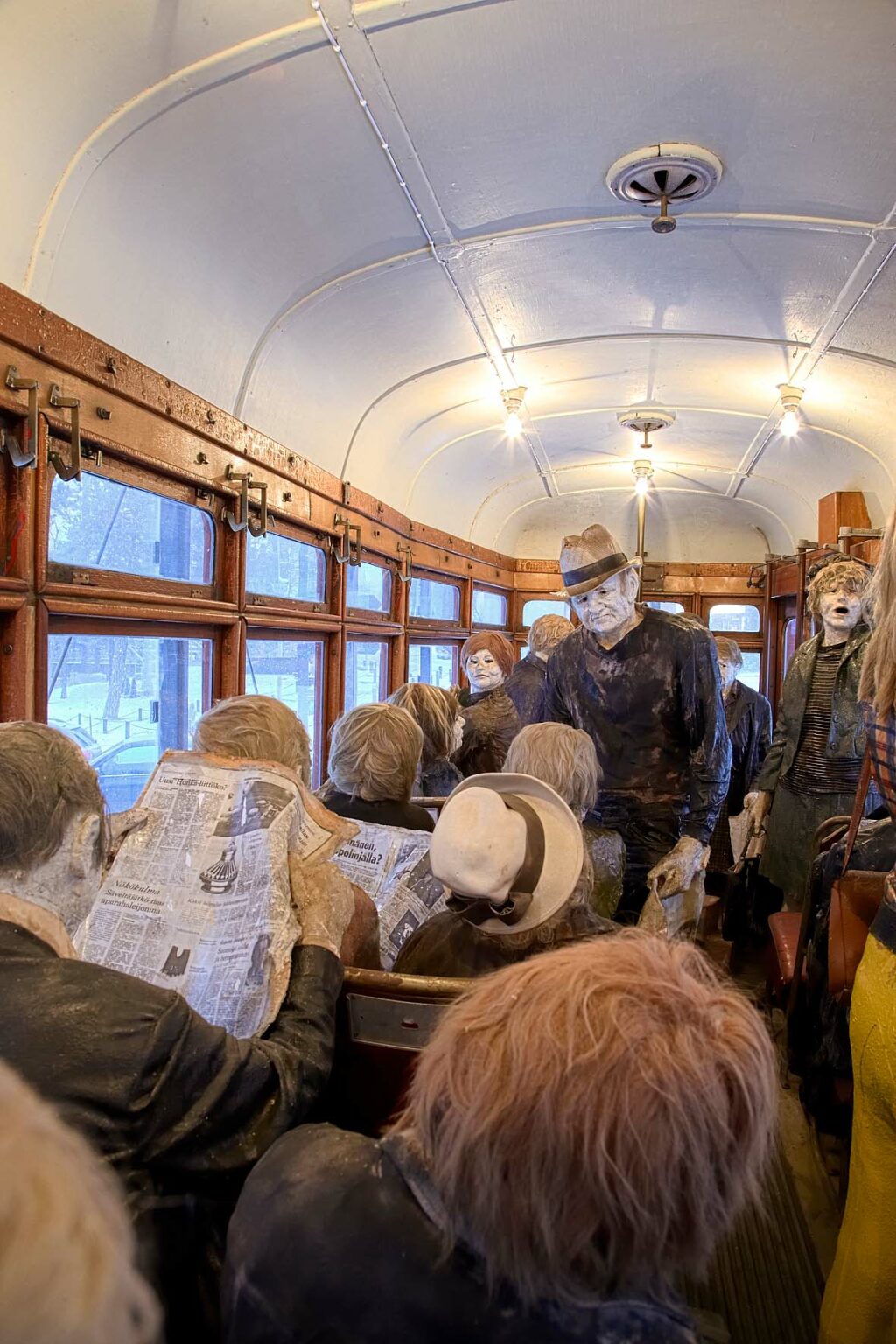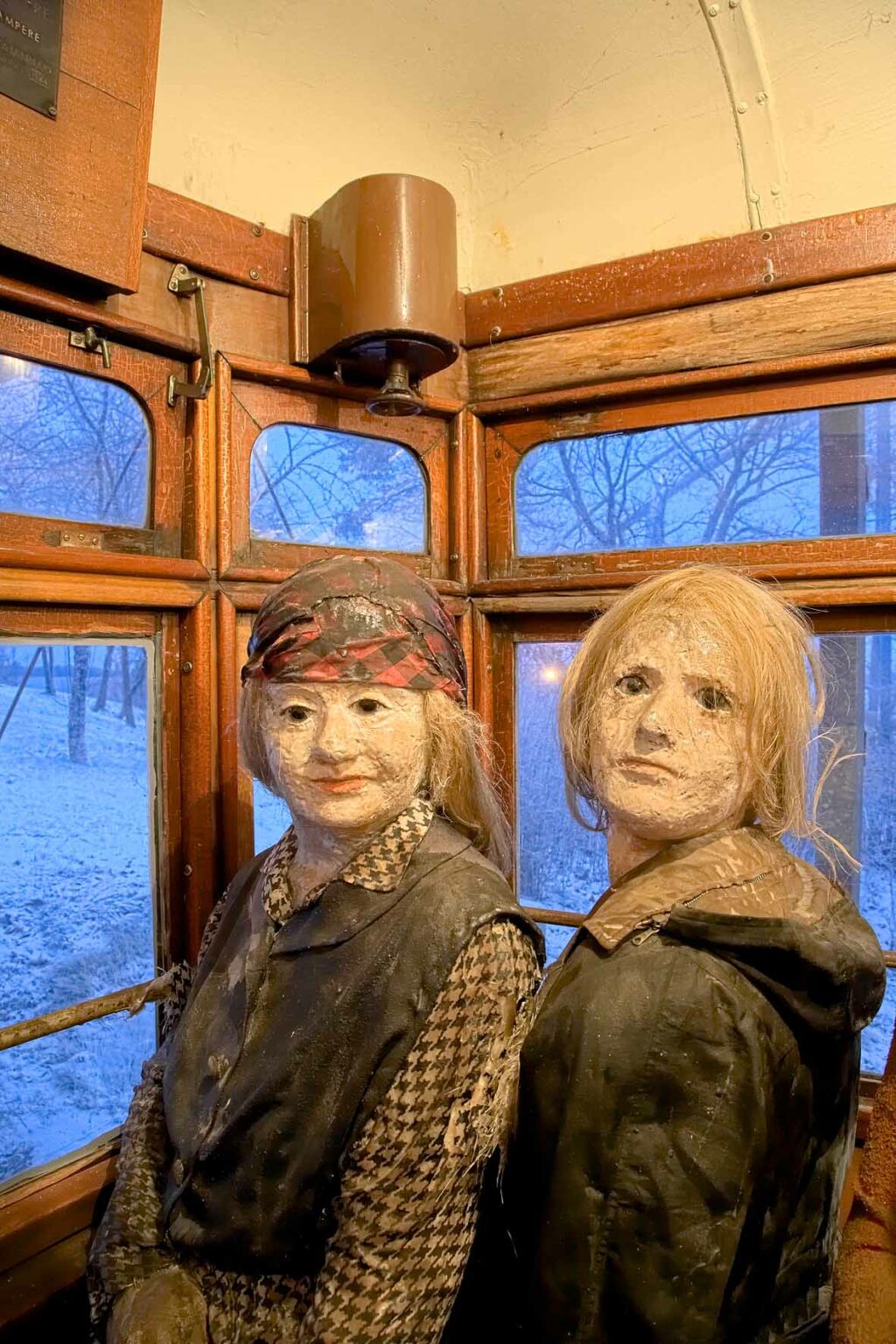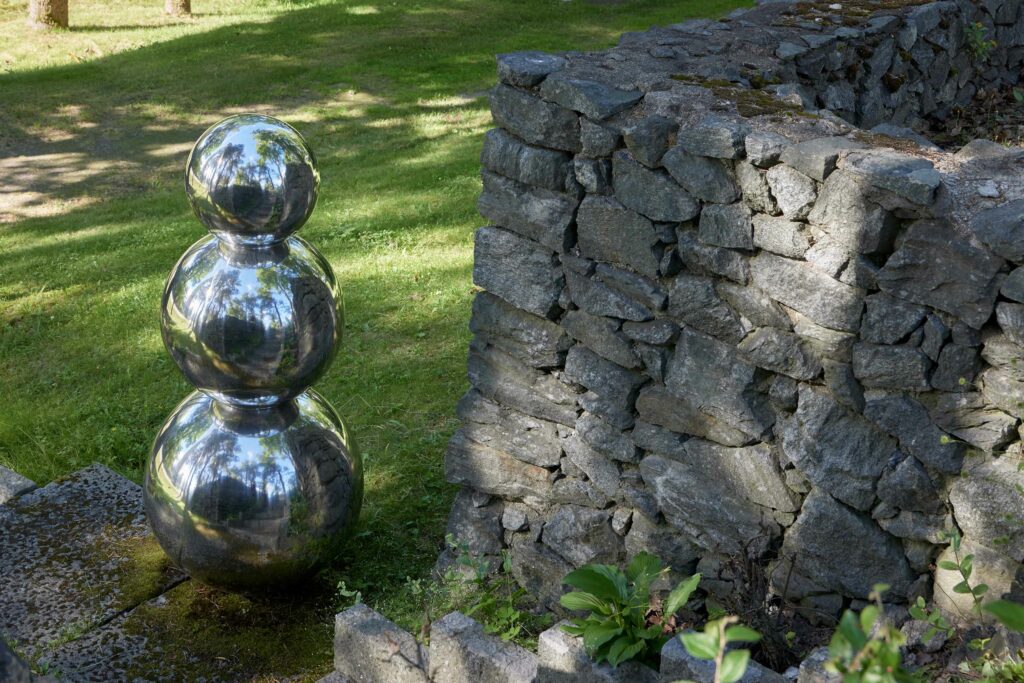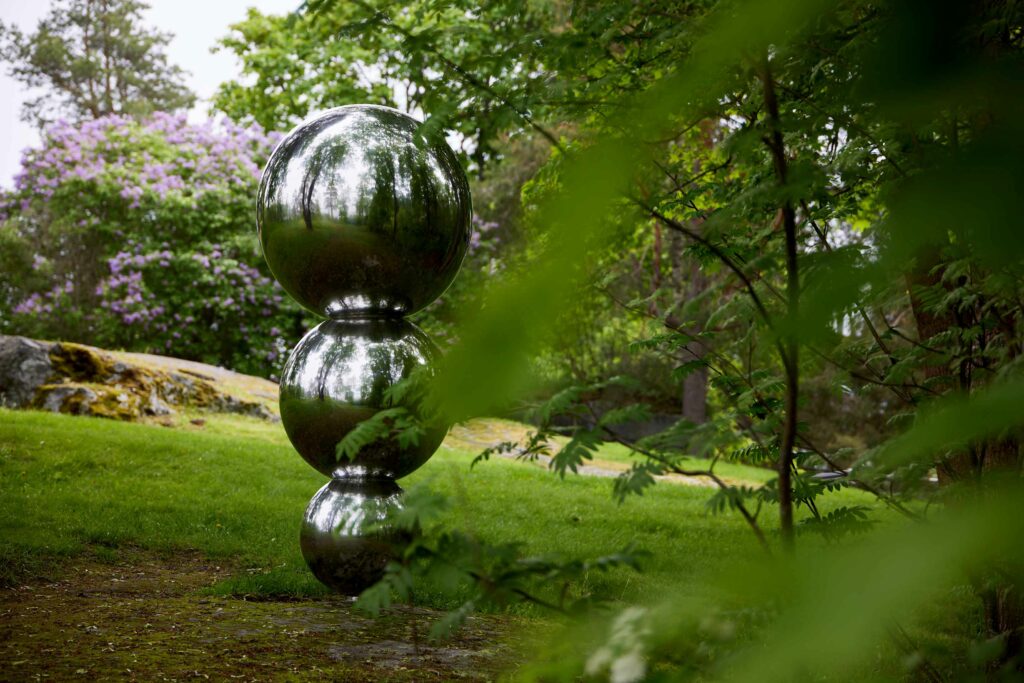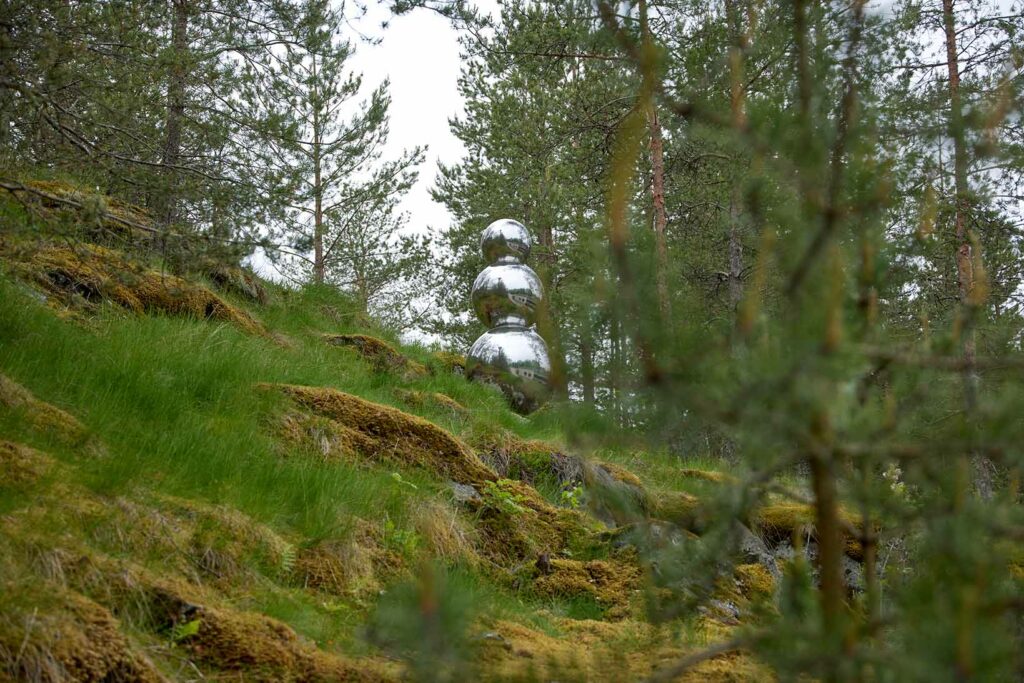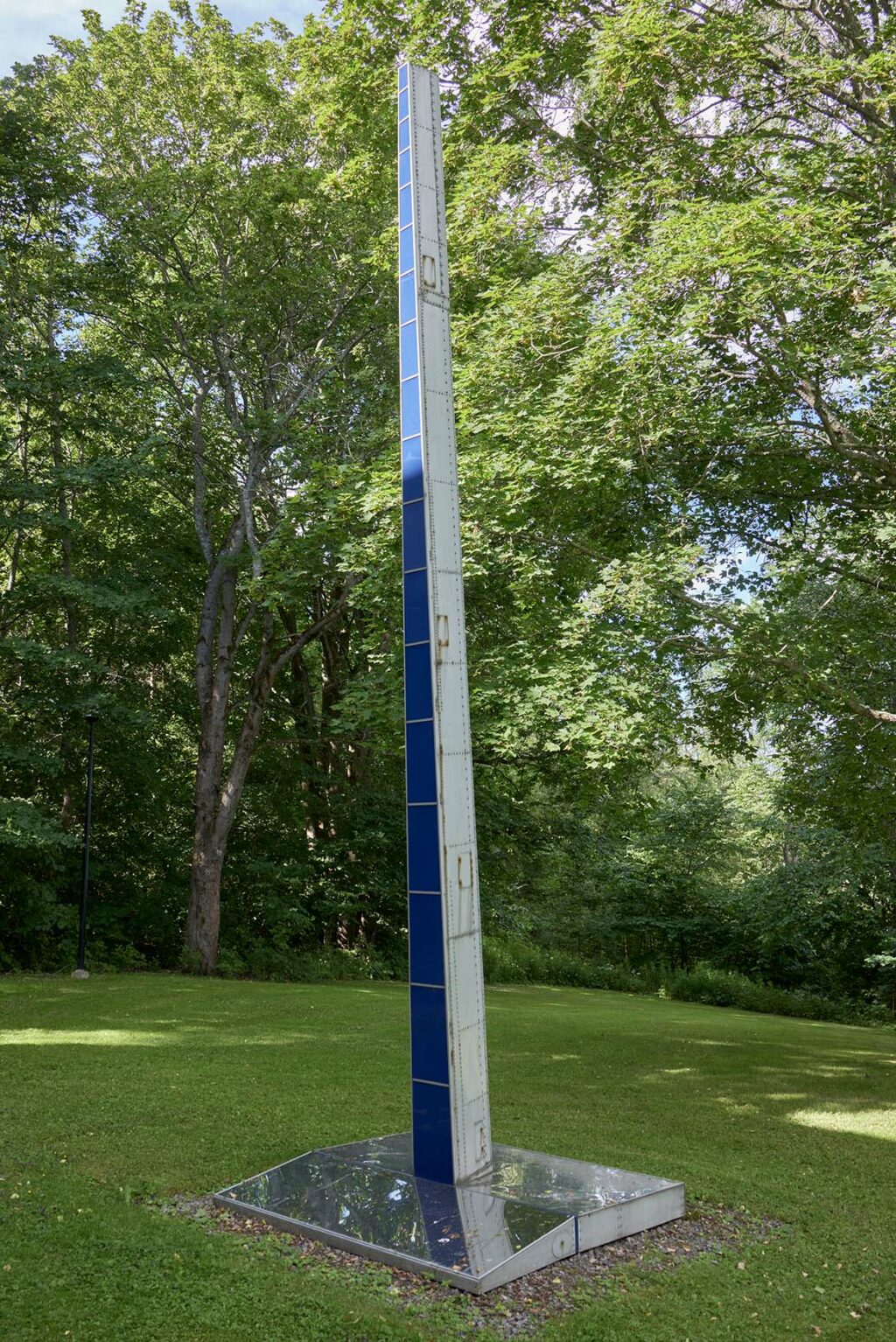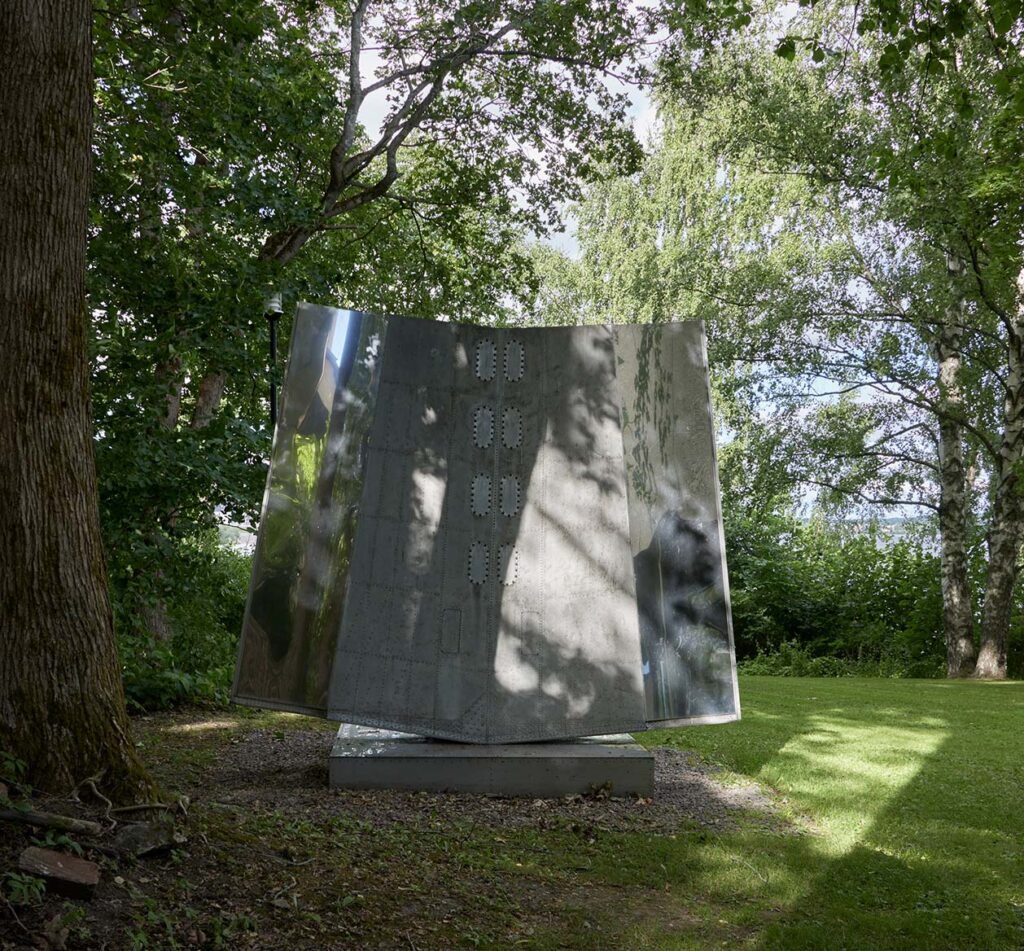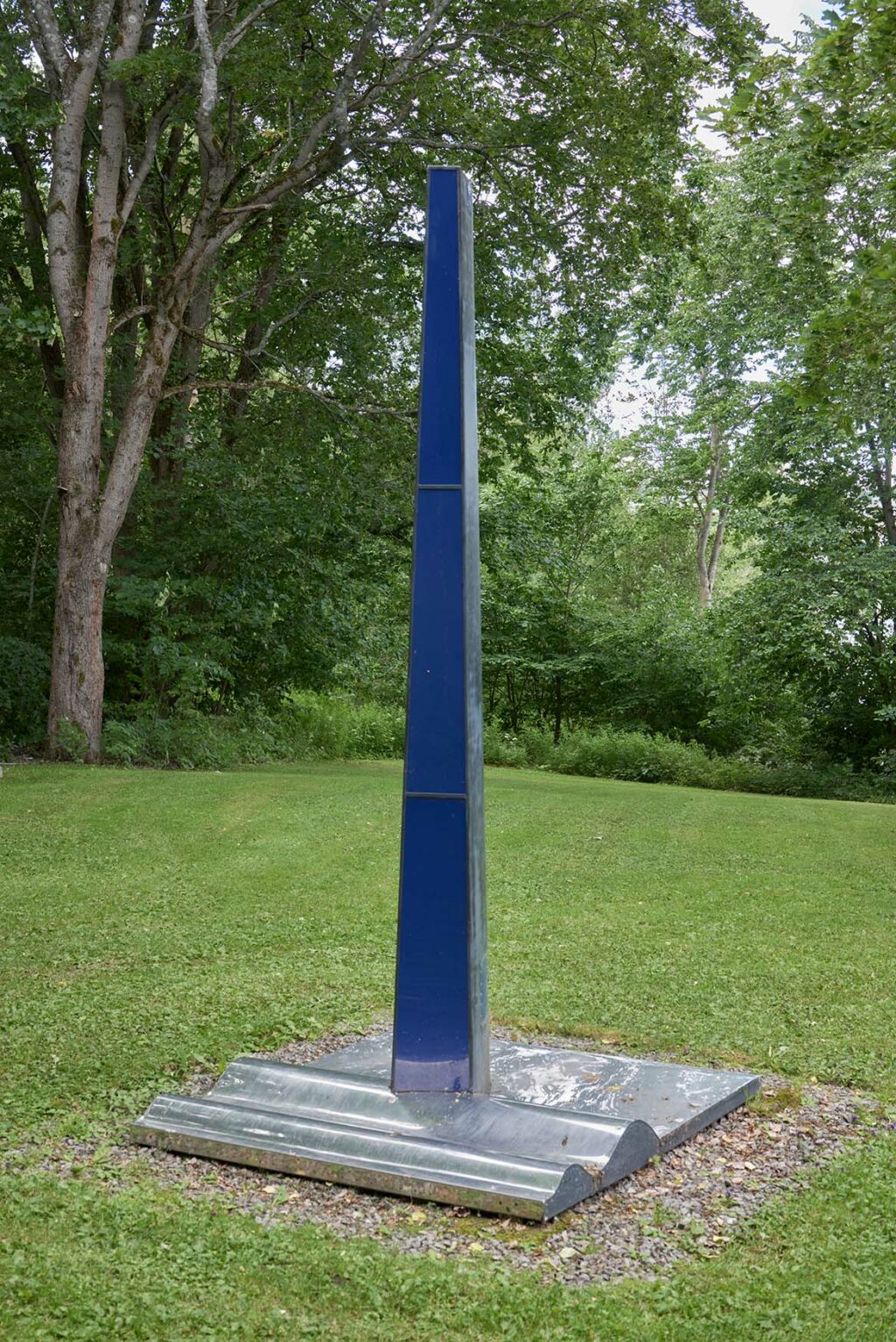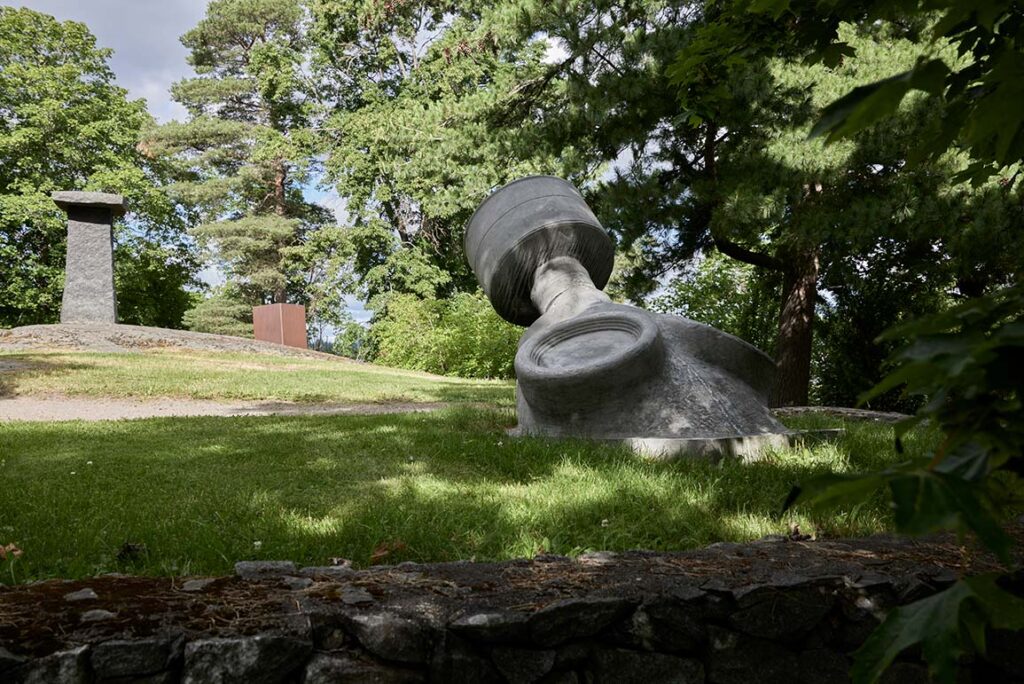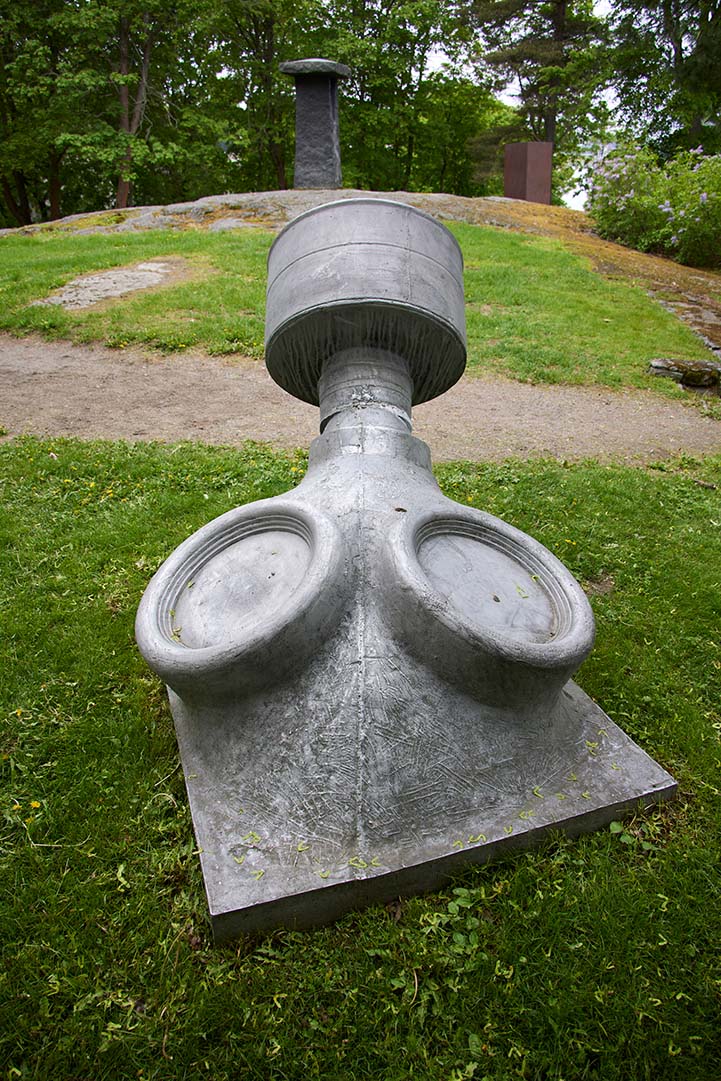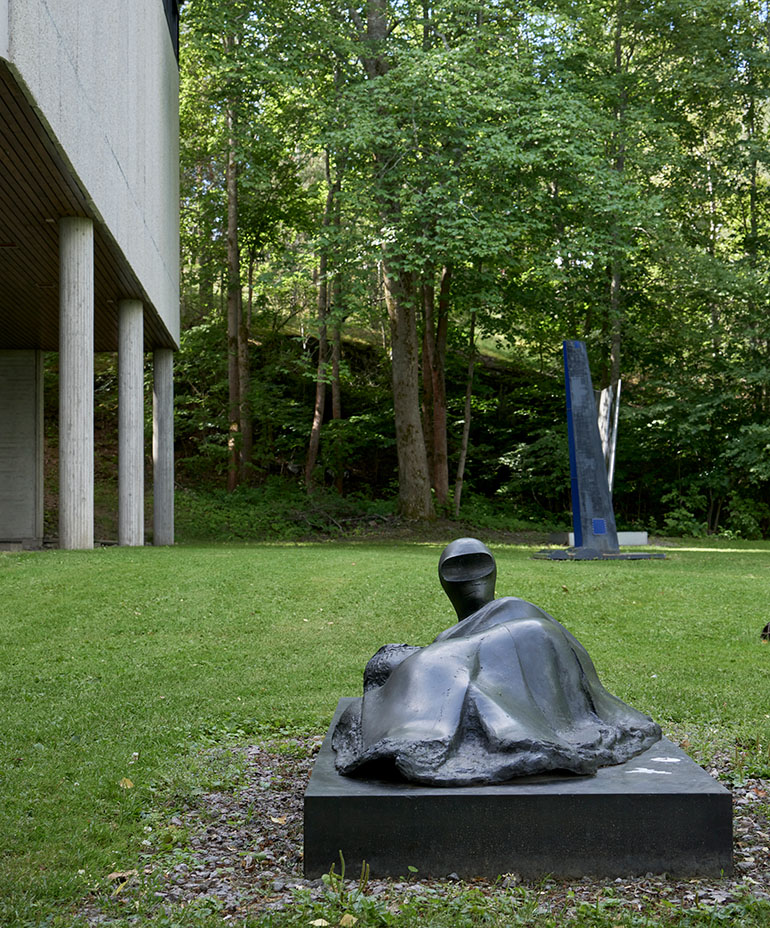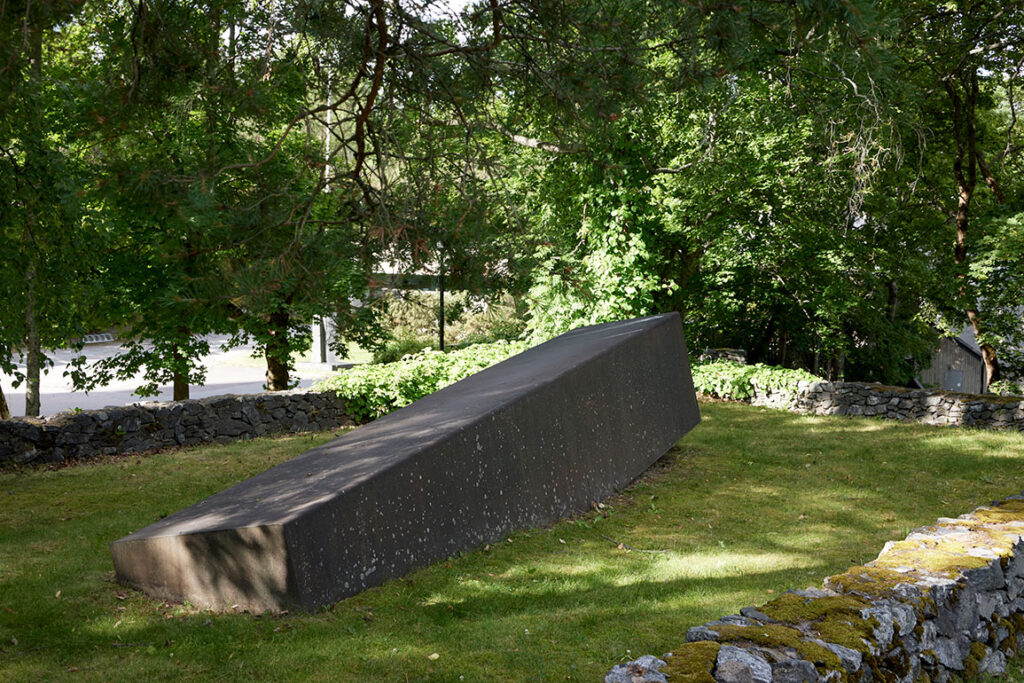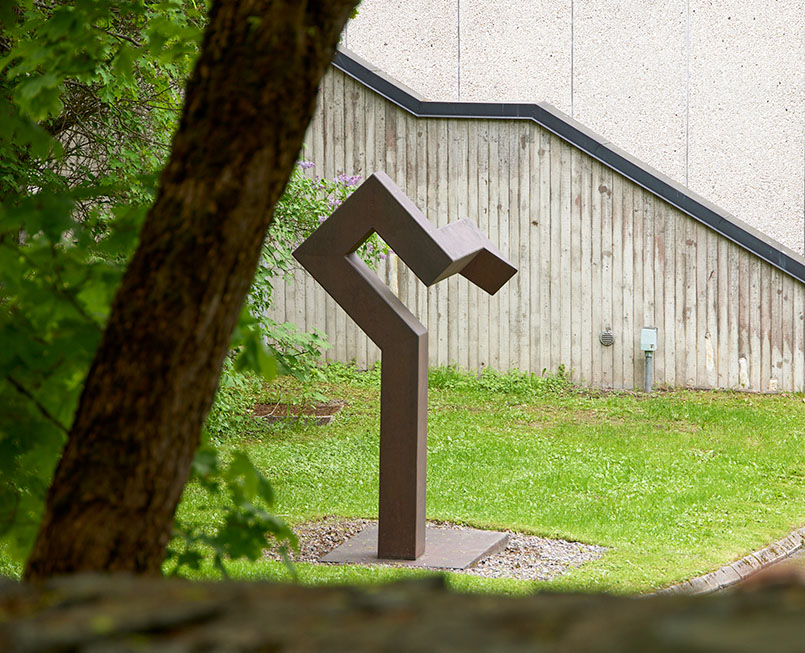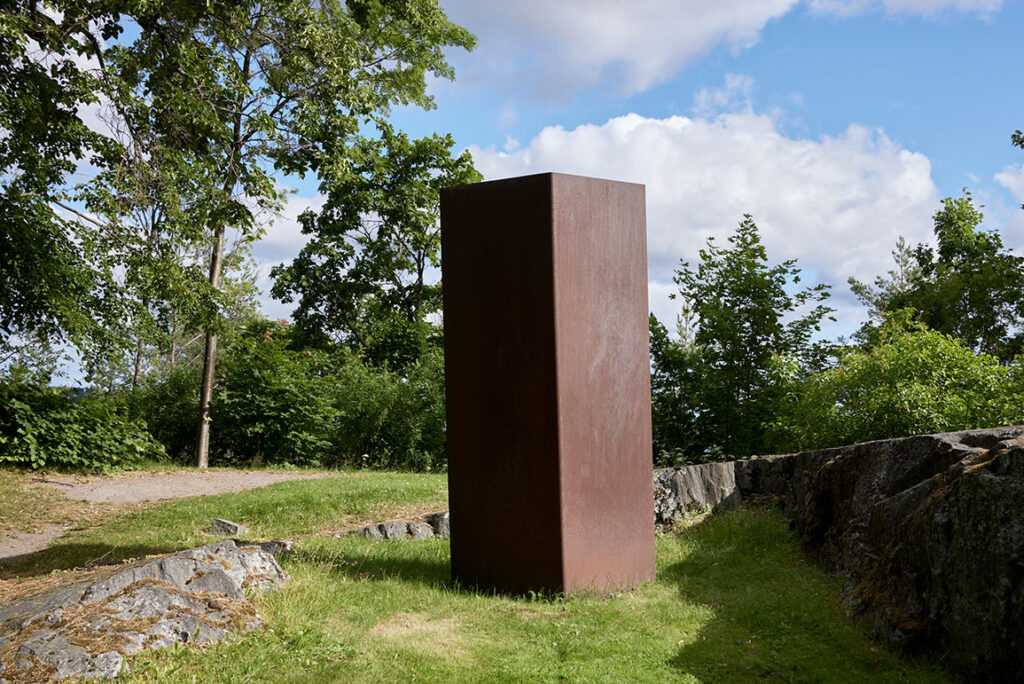The sculpture park surrounding the Sara Hildén Art Museum contains objects from the Sara Hildén Foundation Collection. The environment and lakescape offer an endlessly varied experience. The park is not maintained in winter.
The idea for a sculpture park around the museum building was part of the plan for the art-museum building right from the start, and the park was opened at the same time as the Sara Hildén Art Museum in 1979. It was completed in the 2000s with a three-part work by the OLO-Group, OLO No: 45 (2007–09). There are currently 19 sculptures, by six artists and one artists’ group. The Finnish artists are Harry Kivijärvi, Rauni Liukko, Kimmo Pyykkö, Arvo Siikamäki and Hannu Siren, and the OLO-Group – Pasi Karjula and Marko Vuokola. Foreign art is represented by Bård Breivik’s three-part Mass and Shell and Construction (1983).
The granite walls of the current sculpture park are from the days of Villa Tähkäpää, which once stood on the site. This was surrounded by a sizeable garden, bordered by fortress-like granite walls. The stone steps led up to the Villa, the long-time home of Senior Assistant Judge of the Court of Appeal Evert Tähkäpää. He was an enthusiastic art collector and even donated his art collection to his friend Kustaa Hiekka’s art museum. The Villa was originally built for the use of the industrialist J. Kupiainen, probably at the end of the 19th century, and was demolished soon after the opening of the Museum at the end of 1979.
Bård Breivik (1948–2016)
Mass and Shell and Construction, 1983. Granite, cast iron and steel.
The Norwegian Bård Breivik was a pioneer of Nordic sculpture, who extended the spectrum of techniques and materials by using, for instance, bamboo, crystal glass and black granite in his sculptures. The three-part work in the sculpture park, Mass and Shell and Construction (1983), is an example of a typical Breivik sculpture resembling the hull of an elongated boat, a theme on which he made dozens of variations in different materials during his career. The boat-like shapes nestle behind the museum building, by the shores of Lake Näsijärvi.
Harry Kivijärvi (1931–2010)
Expectation, 1974. Dioritis.
Theme VI, 1974. Dioritis.
Landmark, 1970. Gabbro.
On the Nile, 1975. Dioritis.
On the Beach, 1972. Gabbro.
Night and Day, 1976. Dioritis.
Great Gate, 1969. Dioritis.
Harry Kivijärvi came to the awareness of the general public when he won the design competition for a memorial to President J.K. Paasikivi in 1976. His sculptures are characterized by reductive, abstract forms, with rough and smooth-polished zones alternating in their dark surfaces. Finnish stone material was important to Kivijärvi, and the works in the sculpture park are made of Hyvinkää gabbro and Jyväskylä diorite. Kivijärvi received several major prizes, including the Pro Finlandia Medal in 1970 and the Ars Fennica Lifetime Achievement award in 2003.
Rauni Liukko (1940–2014)
Rush Hour Tram, 1973. Mixed media.
Rauni Liukko is best-known as a sculptor, but her wide-ranging production also takes in paintings, drawings and prints. Added to that, Liukko wrote poems. She used the means of her art to speak out on behalf of the little people caught up in the cogwheels of society. She was particularly vocal on the status of children and women. Rush Hour Tram (1973) is a tramcar taken out of service by Helsinki City Transport’s (HKL). Inside it are passengers made of fibreglass and plaster, for each of whom Liukko created a personal identity, including a name and workplace.
OLO-group: Pasi Karjula (b. 1964) and Marko Vuokola (b. 1967)
OLO No: 45, 2007–09. Stainless steel.
The OLO-Group, comprising Pasi Karjula and Marko Vuokola, has been making the Olo sculpture series since 1990. This includes dozens of works sited in different parts of Finland, some intended to be permanent and others temporary. The sculpture-park work, OLO No: 45 (2007–09), has three parts, each in a different section of the grounds. Each part comprises three steel spheres of different sizes on top of one another, their polished surfaces mirroring the surrounding landscape, which changes with the seasons. Their minimalist execution encourages us to view the landscape in a new way.
Kimmo Pyykkö (b. 1940)
Lighthouse, 1972. Steel, acrylic aluminum.
Extinguished Lighthouse, 1972. Steel, acrylic aluminum.
Balance, 1970. Steel, acrylic aluminum.
Kimmo Pyykkö’s shiny, straight-lined sculptures symbolize technology and our increasingly technologized age. The materials of the sculptures are steel, aircraft aluminium and pieces of airplanes, which Pyykkö has welded and riveted together. Clearly distinct periods associated with the use of different materials are a part of his production. He began with sculptures made from scrap iron, which was followed by cast iron, aircraft materials, aluminium, wood, and bronze. Kimmo Pyykkö was made an honorary professor in 1996 and awarded the Pro Finlandia Medal in 2008.
Arvo Siikamäki (b. 1943)
Mask, 1970’s. Aluminum.
Awakening II, 1972. Bronze.
Arvo Siikamäki is best-known for surrealism-tinged sculptures that frequently make statements on behalf of humanity and nature. Having graduated from the Institute of Industrial Arts and Crafts in 1963, he worked for several years as an assistant to the sculptor Kain Tapper. Harry Kivijärvi was another close supporter. Typical aspects of Siikamäki’s sculptures are simplified figures, solid form, and a feeling of movement. The subject of the Mask sculpture (1970–1) is the horrors of war: the aluminium gasmask is a reminder of the war stories that Siikamäki heard from his father as a child. Arvo Siikamäki was awarded the Pro Finlandia Medal in 2007.
Hannu Siren (b. 1953)
Decision, 1980. Steel.
Departure, 1979. Steel.
Today, 1982. Steel.
Tomorrow, 1982. Steel
Hannu Siren’s abstract geometrical sculptures are made of steel. Tomorrow (1982) stands high up on a rock, while Today (1982) seems to be slowly sinking into the ground. Siren has sandblasted the steel surfaces of these minimalist works, and finally treated them with saltwater, creating a reddish, rusty tone on the surface. His works exist in an ongoing relationship with the surrounding nature and architecture. Siren’s interest in spatiality comes as no surprise: both his parents were architects and their office was annexed to his childhood home.



